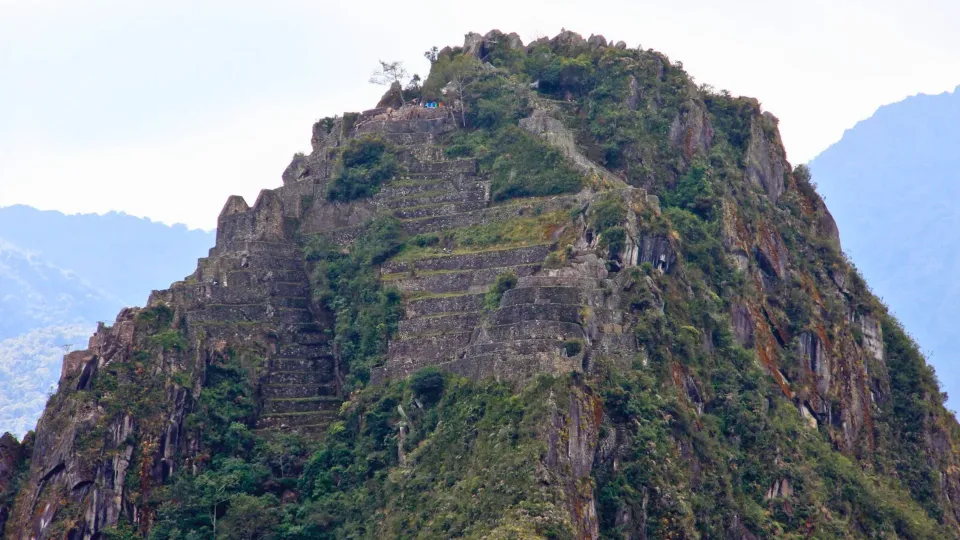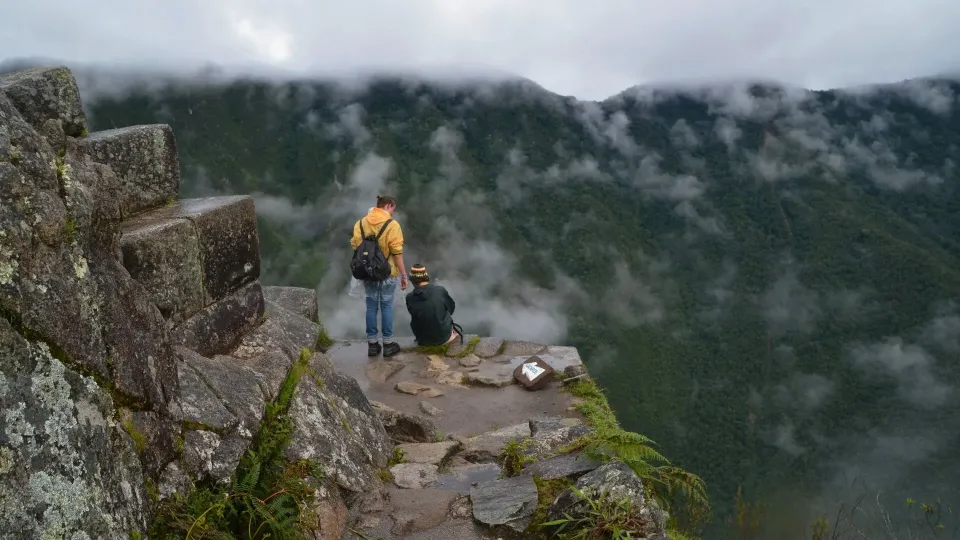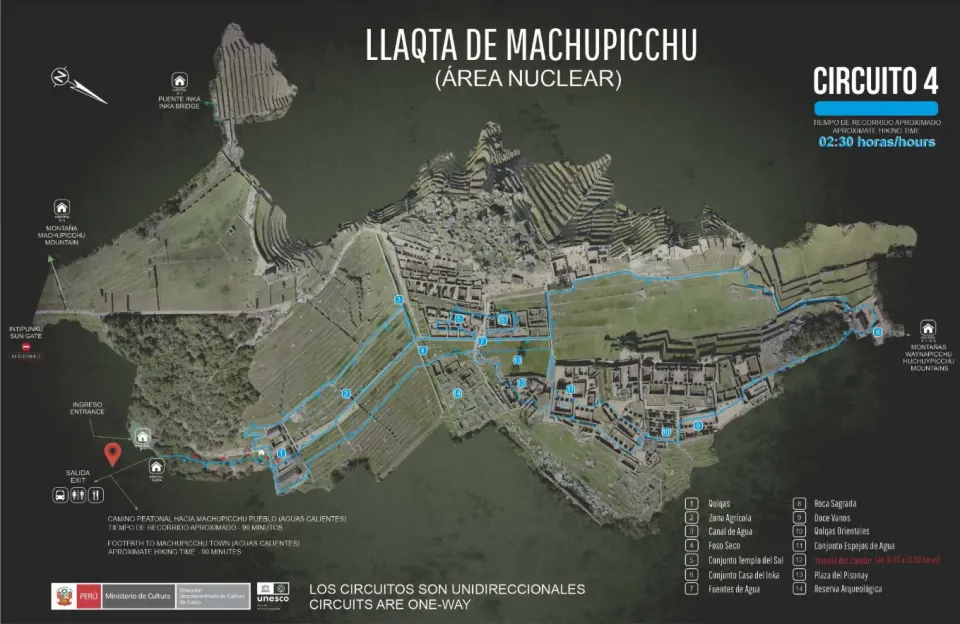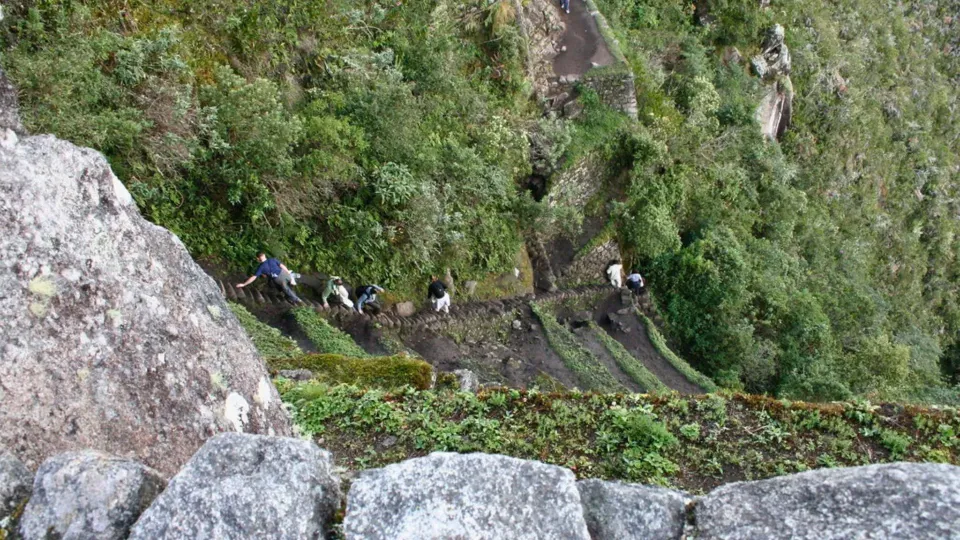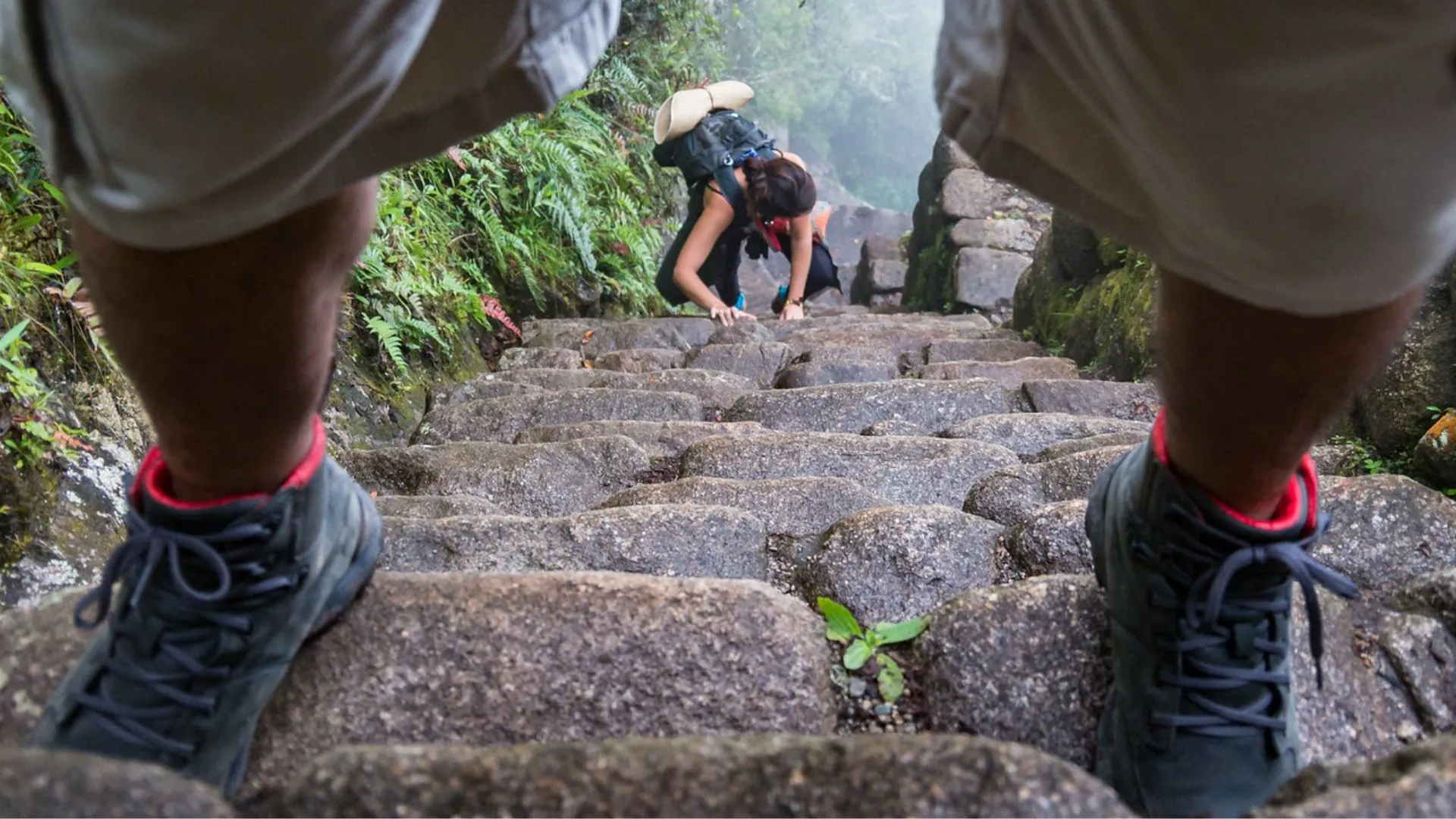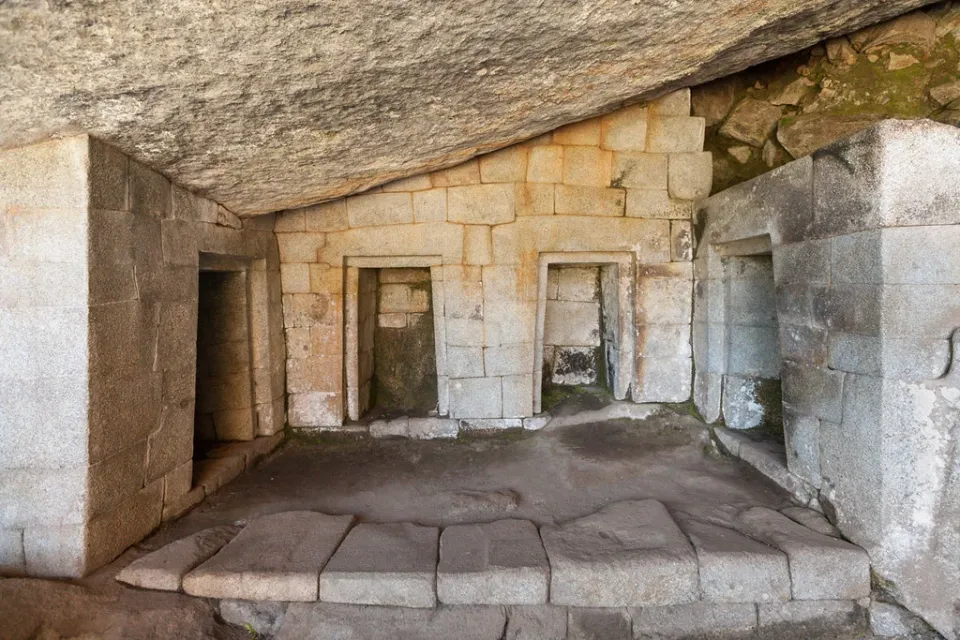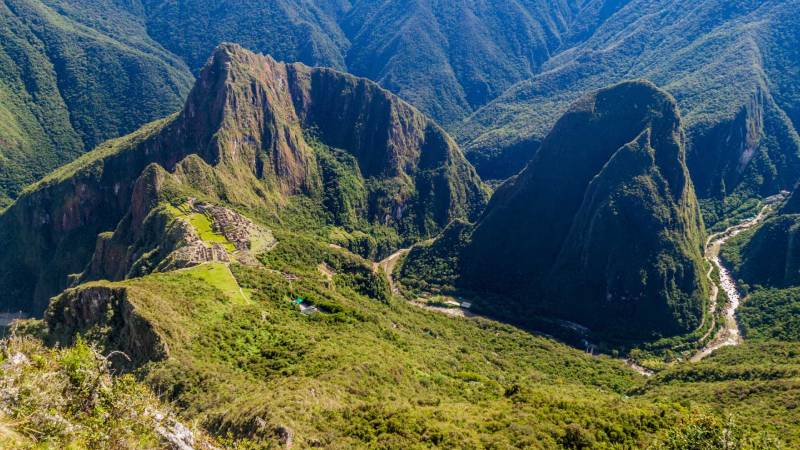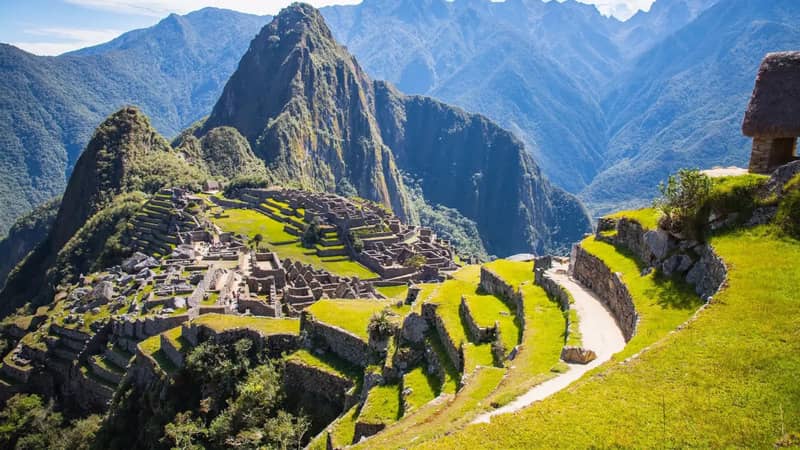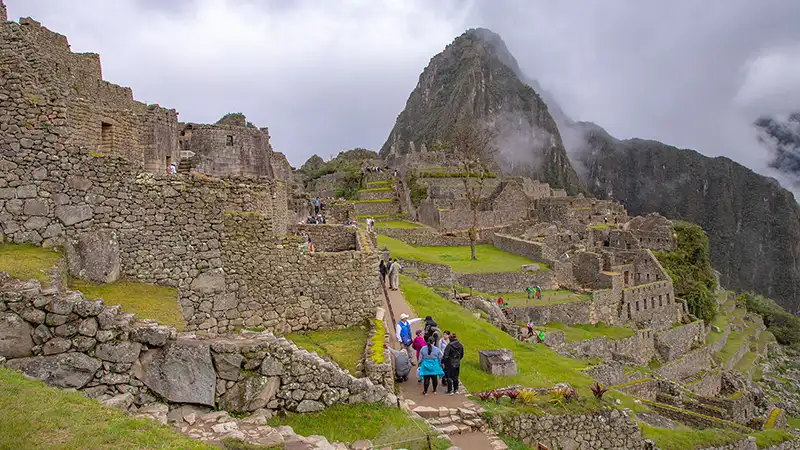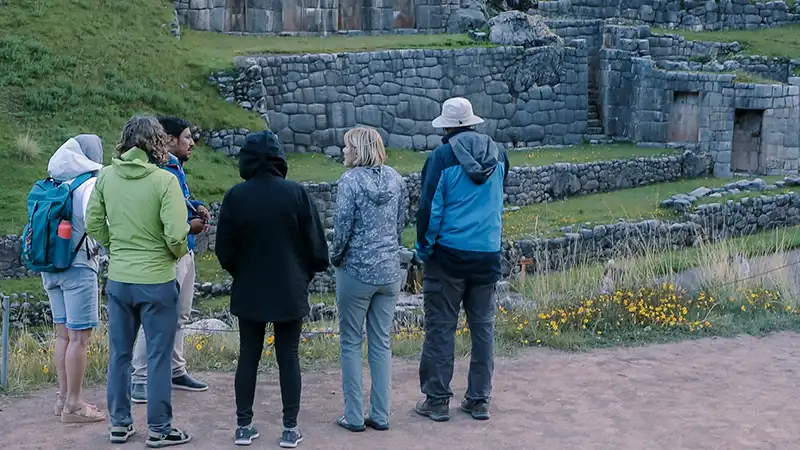The Huayna Picchu Mountain hike and climb went viral on social media with breathtaking, life-defying photos. Not for nothing is it known as the "stairs of death", but is it really scary? After overcoming the stairs to Huayna Picchu, you will receive a great reward. An endless view of the citadel of Machu Picchu and the breathtaking scenery that surrounds it. Read on if you want to know if Huayna Picchu mountain and the temples it hides are really worth visiting.
Find Out all about the Huayna Picchu Hike
What is Huayna Picchu?
The meaning of Huayna Picchu comes from the Quechua (Inca language) “Wayna Pikchu” which translates as “Young Mountain”. Located north of the citadel of Machu Picchu. It offers an exciting hike to the top of the mountain where you realize how special it could have been for the Inca empire.
Terraces, temples and beautiful vegetation such as orchids is a perfect combination for the adventurous. The hike to Huayna Picchu takes on average 1 hour to reach the peak of the mountain. During the climb you will face a lot of steep stairs that challenge the physique. It offers adventurous hikers a challenging trek with incredible views of the ancient Incan citadel and the surrounding landscape.
It is elevated above Machu Picchu, at a height of 2693 meters above sea level, exactly 260 meters higher than the wonder of the world. A dream view but what was really the function of Huayna Picchu mountain for the Incas.
Brief History
The history of Huayna Picchu and Machu Picchu are related. On the mountain peak the Incas built residences for the high priest and virgins, according to local guides. What is an enigma is how they built the stairs, which demonstrates the vivid ingenuity and creativity of the Inca civilization.
Huayna Picchu has a strategic location, which suggests that it functioned as a lookout point to Machu Picchu and the surrounding area. Although the purpose is not entirely clear, it could also have served as a place of worship or a religious ceremonial center. This can be seen in the temples built in Huayna Picchu, in which the Temple of the Moon stands out. A stone site in the form of a shallow and open cave.
It is necessary to highlight that in 1911, Hiram Bingham rediscovered Huayna Picchu with the help of a child possibly called “Pablito”, before finding Machu Picchu. There is still much to discover, it is an experience not to be missed. Do you want to know where it is and how to get to Huayna Picchu?
Where is Huayna Picchu in Peru?
Huayna Picchu is located in the Cusco region, province of Urubamba, district of Machupicchu. Huayna Picchu elevation is of 8835 feet with coordinates of 13°09′27″S 72°32′50″W. From the city of Cusco it is 80 kilometers (50 miles). It is within the archaeological center of Machu Picchu, but you will need an entrance ticket to enter and know in which month has favorable weather.
Favorable weather so you can do the hike
The weather as in the whole region is unpredictable throughout the year. However you can take advantage of some weather patterns; from May to September is the season where there is no rain, and it is a favorable climate. Where you are likely to have a sunny day and clear skies. But it is a high season for tourist visits, where you might have to wait in line to enter the archaeological site.
From October to April is the rainy season, where you will find yourself surrounded by perfect vegetation, vivid and abundant colors. You will need waterproof gear such as jacket and pants. The only drawback are some slippery trails, where you just have to be a little careful.
Which entry time should you choose
First shift entrance
If you want to return early from the Inca citadel and beat the time. You can explore the wonders of Machu Picchu from 6:00 am. So you can start the hike to Huayna Picchu from 7:00 am to 8:00 am. A terrifying experience for some or challenging for others, where you can purchase one of the 75 permits available per day. I recommend staying the night before in Aguas Calientes and at dawn take the first buses to Machu Picchu.
It is for you if: you have little time, you want to return early. Or if you only want to hike to Huayna Picchu.
Second shift entrance
You will enter the beautiful Machu Picchu after 7:00 am. Then you will be able to make the ascent to the Huayna Picchu challenge between 8:00 am until 9.00 am. Please note that the duration of the hike from the main entrance to the Huayna Picchu entrance is 20 minutes. 75 daily permits are eligible.
It is for you if: you want to explore Huayna Picchu mountain before 9 am and return early.
Third shift entrance
If you will take an alternative hike or tour that leads you to Machu Picchu, you may want to choose this schedule. Because you will be able to enter after 8 am and access Huayna Picchu between 9 am and 11 am. There are a total of 75 permits available.
It is for you if: you have an early guided tour or want to explore more minutes in Machu Picchu.
Last shift
Your entrance time to the citadel of Machu Picchu will be after 9:00 am. And you can enter through the entrance of Huayna Picchu between 10:00 am and 11:00 am. Where you will start your ascent to the incredible mountain of Huayna Picchu to get the best views. You can buy one of the 75 permits per day. It is recommended to buy them in advance because they usually sell out much earlier.
It is for you if: you have a guided tour, or you will do the Inca Trail, Salkantay trek, Lares Trek, Inca Jungle Trek, Train Tours or any other trekking.
What ticket do you need to purchase?
You need to buy the ticket Circuit 4 + Waynapicchu Mountain, it is the only one that will allow you to have this experience. Your tour will take approximately 2 to 3 hours. The routes come predefined in only one direction, that is, you cannot return on the way. In circuit 4 you will be able to see inside Machu Picchu the Qolqas (granaries), agricultural zone, water channels, dry well, temple of the sun, house of the Inca, water fountains, the sacred rock, twelve openings, eastern Qolqas, water mirrors, temple of the condor, Pisonay plaza and archaeological reserve.
Entrance fees
The costs to climb Huayna Picchu are:
What Attractions You Will See
1.The hike and the climb
You will walk up a gentle ascent, then you will come to a crossroads. Where the one on the left calls you to Huchuy Picchu mountain and on the right leads you to Huayna Picchu. It will be marked on a sign. You can not get lost. Remember that the climb to Huayna Picchu is an ancient place where possibly served to perform Inca rituals. Then you will climb some steep steps, there are more than 750 steps of polished stones. The climb is challenging but you will be able to find platforms to rest and take pictures during the ascent. Before reaching the top, the famous “Stairs of Death” await you.
At the top you will have to decide which way to return:
- Short way: It gives you the possibility to return by the same way you climbed.
- Long way: You will notice that it is less traveled so there will be less crowds. A sign will guide you because it indicates “the big cave”. You will make a descent down stone steps. Then you will explore the mysterious temple of the moon. On the way back up, you will return to Machu Picchu. Let me tell you that the endless views you will encounter are what they really look like.
2. “The stairs of death” Are these dangerous?
They are famous for everything that is said about it. But in reality the stairs of death are not as dangerous as they seem. They are difficult to climb but doable. The only problem would be if you suffer from too much vertigo, which could make it difficult to descend. The good news is that you will find some cables that will facilitate your ascent and descent.
However, it is more of a physical challenge because it is a lot of steps almost all the way up. The high altitude might affect your breathing a bit. Coca leaves could help you with that. It is recommended to hire a guide so he can show you the whole story.Don't let the nickname “stairs of death” scare you, just do it. You won't regret it.
3. Temple of the moon
In order for you to visit the temple of the moon you have to buy the entrance ticket to Machu Picchu + Wayna Picchu at the first turn of entry. When you descend from Huayna Picchu to the temple the path may be slippery with some sections secured by cables.
The Temple of the Moon is an Inca ceremonial archaeological site, located near Machu Picchu. It is also known as “The Great Cavern”. At the site you will see a throne carved in rock and steps deep in the cave. It has an excellent stonework like few other places.
It is explained that it represents the three planes of the Inca religion: Hanan Pacha (heaven), Kay Pacha (earth) and Ukju Pacha (underworld). Perhaps the Incas worshipped their gods, used it as a royal tomb or a guard post in this place. Some believe that they did use it for sacrifices because they found an altar carved in rock. But it has not been confirmed one hundred percent.
It is currently closed to the public in order to preserve the archaeological site.
Safety Tips:
- Make sure you are well-acclimatized to the altitude before attempting the hike
- Wear sturdy hiking shoes with good grip, as the trail can be slippery, especially in wet conditions
- Carry plenty of water and snacks, as there are no facilities along the trail
- Start the hike early to avoid the heat of the day and ensure you have enough time to complete the hike before the site closes
- Pay attention to weather conditions and avoid the hike in heavy rain or poor visibility
What to Bring:
- Passport (required for entry)
- Sturdy hiking shoes
- Sunscreen and a hat
- Rain jacket or poncho (depending on the season)
- Camera or smartphone for photos
- Water and snacks
- A small backpack to carry your belongings
Takeaway: Is it worth it?
Don't let the name “stairs of death” scare you. You'll find an exciting route to climb. I recommend you do a little training so you don't suffer too much and get proper footwear. It is less demanding than it looks. As you climb you'll find rest spots and awesome photo stops. You will find a steep but doable climb, because you will have something like handrails for you to lean on. Once at the top you will have a unique experience being surrounded by nature with a panoramic view. Huayna Picchu hike is worth it because you will receive great rewards.

